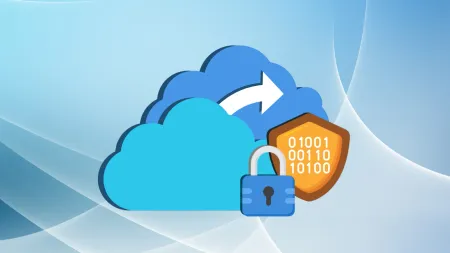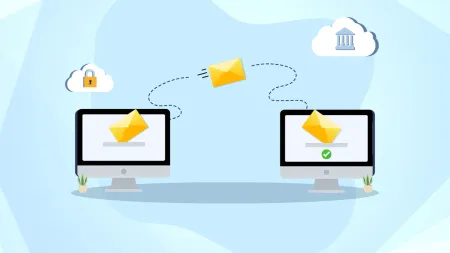What Is a POAM?
Learn how a Plan of Action and Milestones (POAM) helps meet NIST 800-171 & DFARS compliance. Understand its role in FedRAMP, security categorization, and risk mitigation.

What is a POA&M? Understanding Plans of Action and Milestones
Falling short on cybersecurity compliance can cost you more than just a contract—it can put your entire Department of Defense (DoD) partnership at risk. For many defense contractors and suppliers, keeping up with changing requirements, evolving threats, and limited internal resources makes it feel like you’re constantly playing catch-up.
That’s where Cybersecurity Maturity Model Certification (CMMC) comes in. Designed to safeguard Controlled Unclassified Information (CUI), CMMC helps organizations across the Defense Industrial Base (DIB) prove they have the right security measures in place—and stay eligible for defense contracts. But achieving and maintaining compliance isn’t a one-time event. Every three years, you’ll need to pass an assessment by a Certified Third-Party Assessor Organization (C3PAO). And even if your team has worked hard to follow the rules, there’s always a chance that auditors will find gaps in your cybersecurity posture.
When that happens, your organization—officially called an Organization Seeking Certification (OSC)—will need to create a Plan of Action and Milestones (POA&M). It’s your roadmap for addressing any issues and staying on track with compliance.
So how do you know when a POA&M is needed, what goes into it, and why it matters for both CMMC and NIST SP 800-171 compliance? Let’s break it down.
What Is a POA&M?
So, what exactly is a POA&M? A Plan of Action and Milestones is a formal corrective action plan for tracking, managing, and correcting weaknesses and deficiencies in an organization’s security posture. This document identifies security vulnerabilities that need remediating and the tasks that need to be completed to restore compliance; it also outlines resources, milestones, and completion dates to ensure timely remediation of security deficiencies. The POA&M’s purpose is then to make risk identification and mitigation systematic by providing a structured approach to tracking risk mitigation activities. It identifies existing risks, ongoing monitoring, corrective actions, and current disposition. The POA&M then plays a critical role for organizations within the DIB, as it helps them track and manage security deficiencies to ensure ongoing compliance. However, for a POA&M to be successful, it needs to do the following:
- Identify the security categorization (low, moderate, or high).
- Enumerate weaknesses and deficiencies in security controls.
- Evaluate the importance of weaknesses and deficiencies.
- Describe the scope of each weakness as it relates to environmental components.
- Propose an approach to the mitigation of weaknesses and deficiencies.
- And lastly, describe the current progress in mitigating them, including providing detailed actions, milestones, and completion dates.
Why Are POA&Ms Important?
POA&Ms are an important part of the compliance process as they provide a structured approach for remediating security deficiencies and noncompliance issues in an efficient, thorough, and timely manner. A POA&M creates a specific plan of action that describes the steps necessary to correct deficiencies and mitigate risks, as well as critical milestones and deadlines an organization must adhere to maintain compliance. In fact, POA&Ms are a critical component of both CMMC and NIST SP 800-171 compliance, as both have control families Security Assessment and Monitoring require organizations to develop a POA&M.
When Are POA&Ms Needed?
Yet, how will you know when your organization needs to complete a POA&M? To maintain CMMC compliance, an organization must develop a POA&M whenever a weakness or deficiency in their security posture is discovered. Most commonly, this occurs following a third-party assessment or audit by a C3PAO, as any unmet requirements must be documented and tracked for remediation. An organization may also discover weaknesses during internal vulnerability assessments such as penetration testing, as well as during routine monitoring. When this occurs, it is essential that you document the deficiency in your POA&M to maintain compliance.
POA&Ms and CMMC
POA&Ms are also a crucial part of the initial CMMC certification process, as they allow OSCs to be awarded conditional compliance status even if they did not meet certain controls during their third-party assessment. The fact is that achieving CMMC is complicated, and meeting all 320 NIST SP 800-171 assessment objectives is a huge undertaking that many organizations do not have time to complete by the deadline required to apply for and win a government contract. The DoD knows this, which is why the CMMC Final Rule allows organizations undergoing the CMMC certification process to be awarded a conditional certification if their organization meets at least 88 out of the 110 (80%) required controls outlined in NIST SP 800-171.
However, any controls that they have been found to have not met during their assessment must be placed into a POA&M. The OSC then has 180 days to remediate the “NOT MET” controls and pass a POA&M close-out assessment to achieve final certification.
It is important to note that there are specific requirements at both CMMC Level 2 and Level 3 that are not eligible to be included in a POA&M. These controls must be fully met at the time of the initial assessment to achieve any level of CMMC certification.
Otherwise, they will lose their conditional certification, and their contract will be revoked. This underscores the complex and time-sensitive nature of achieving CMMC, which is why your organization should consider working with a CMMC Managed Service Provider (MSP). An experienced MSP can help you understand your compliance obligations and guide you through the CMMC certification process.
How is a POA&M Different from an SSP?
Of course, you may find yourself wondering how a POA&M differs from a System Security Plan (SSP). While both the POA&M and an SSP play an important role in a DoD contractor’s overall cybersecurity posture, there are distinct differences between their functions. While a POA&M is a remediation plan that helps an OSC map out the steps they need to take to fix vulnerabilities in an information system, SSPs serve a broader purpose. An SSP is a comprehensive document that outlines the policies, procedures, and controls in place to protect sensitive information and systems from unauthorized use, access, modification, and destruction. Both SSPs and POA&Ms then play critical roles in a DoD contractor’s cybersecurity posture.
The Lifecycle of a POA&M Item
As already noted, a weakness can be initially identified in several ways. The use of vulnerability scan tools is the most common, and these weaknesses are generally easy to mitigate. CSPs must scan web applications, databases, and operating systems monthly. Scanning tools need to follow FedRAMP requirements. They need to use CVE reference numbers and CVSS scores when available. The output of a scanning tool needs to be in a structured data format, such as XML, JSON, or CSV.
One vulnerability may turn into multiple POA&M items if separate mitigations are necessary for different assets. However, multiple vulnerabilities should never be grouped into one POA&M item.
Penetration testing is valuable for finding weaknesses that aren’t already categorized or result from configuration issues. It involves a wide variety of approaches but FedRAMP provides a great guidance document. Pen testing in this context includes not only probing software for weak points but also simulated phishing attacks to test your team’s readiness.
An identified weakness will be entered as an open item, recording how and when it was identified. It will be assigned a point of contact and an overall remediation plan with one or more milestones should be added promptly. Mitigation can be as simple as downloading a patch or fixing a configuration parameter. In other cases, research may be necessary to find the source, and developers may have to write new code. Whatever the remediation steps are, their execution must be kept in sync with the POA&M, so it reflects the current status from month to month.
Agile IT Can Help You Achieve CMMC Certification
As a DoD contractor, subcontractor, or supplier, it’s essential that you take proper steps to secure any CUI you store, transmit, or process to ensure national security and maintain CMMC compliance. This includes regularly testing your systems for vulnerabilities and creating a POA&M to help you remediate any weaknesses or deficiencies you discover in your security posture.
Maintaining a proper cybersecurity posture for CMMC compliance requires a major investment of time and effort, making the prospect of achieving CMMC certification overwhelming. The good news is that you do not have to go through this process alone. With the assistance of a CMMC Registered Provider Organization (RPO) like Agile IT, achieving CMMC certification becomes much quicker and less stressful. If you are looking to get ahead of your organization’s CMMC requirements, request a free consultation today to learn more about our services, as well as to find out how our AgileDefend MSP for CMMC service can help you stay ahead of evolving threats and regulatory requirements.






